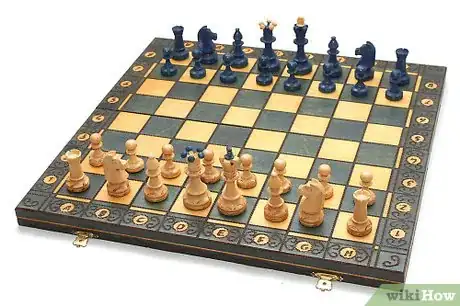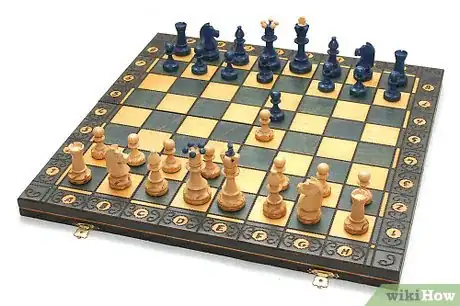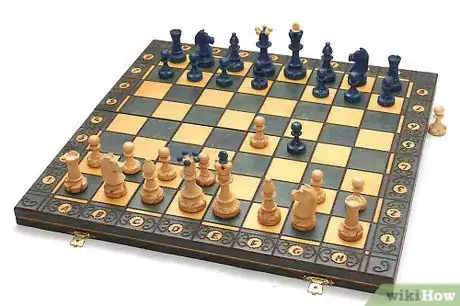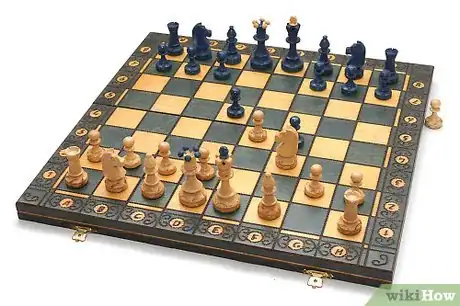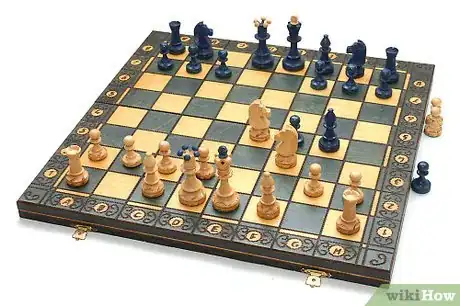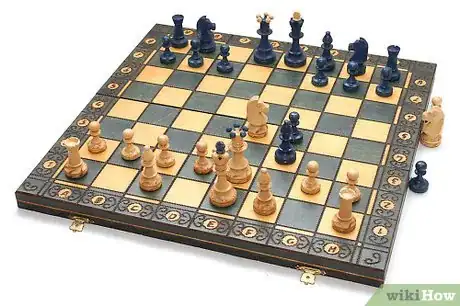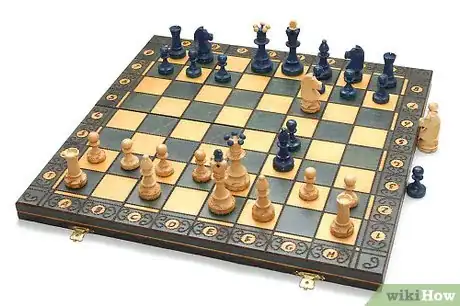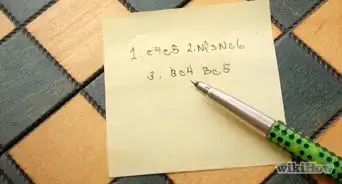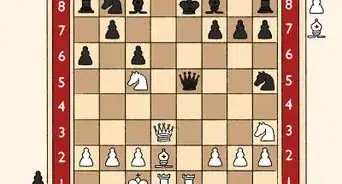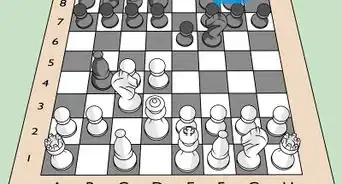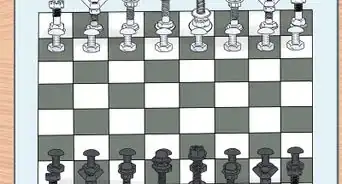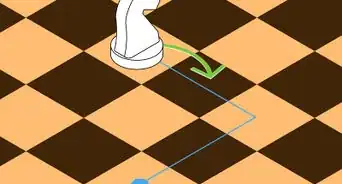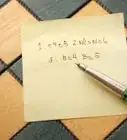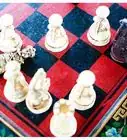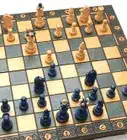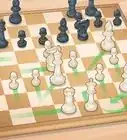X
This article was co-authored by Sahaj Grover. Sahaj Grover is a Chess Grandmaster, World Champion, and coach, who attained his Grandmaster title at the age of 16. He has been a World Junior Bronze Medalist, World U10 Champion, South African Open 2017 & 2018 Champion, and the Winner of the Arnold Classic 2018 & 2019. Sahaj is known for dynamic attacking skills and being an excellent endgame player.
This article has been viewed 109,695 times.
Here is a famous trap you can set up in the King's Gambit Accepted Opening in Chess while playing as white. This lethal trap may catch the unsuspected player unfamiliar with the King's Gambit opening.
Steps
-
1Set up the board and proceed as outlined in the following steps. Algebraic chess notation is used to explain the moves.
-
2e4. Moving the King pawn two spaces forward is the most common move played in professional and amateur chess. It opens up the center as well as the diagonals for White's Queen and King Bishop.
e5. Moving the King pawn two spaces, for the same reasons above, is the most common move in reply to e4.Advertisement -
3f4. Moving the King Bishop Pawn two spaces forms the King's Gambit Opening, by offering the pawn for Black's King Pawn. This is an aggressive move in an attempt to dominate the center by trying to get Black's King Pawn away from the center.
exf4. Accepting the gambit. This move is perfectly fine to play, although caution is needed to avoid traps. -
4Nf3. King Knight move to f3 is virtually forced in the King's Gambit Accepted Variation (other moves, such as Nc3, b3, fall to 3...Qh4+).[1] The knight move develops an important piece to prepare for kingside attack, and protects the h4 square. A more daring move is Bc4, but after 3...Qh4+ 4. Kf1, White can no longer castle.
d5. Queen Pawn moving two spaces to open up the center is a daring move forming the "Modern Defense" in the King's Gambit Accepted Variation. Other possible moves here include g5 (protecting the pawn at f4 and keeping the f file closed), Nf6 (developing the King Knight), Nc6 (developing the Queen Knight), d6 (more conservative center pawn play), and Be7 (aiming at the h4 square). -
5Nc3. Developing the Queen Knight, attacking Black's Queen pawn, and protecting the King pawn. exd5 simply taking the pawn is also plausible here.
dxe4. Taking the King Pawn. -
6Nxe4. Taking the pawn back.
Bg4. Pinning White's King Knight to the Queen. -
7Qe2. The Queen's move sets a trap.
Bxf3? Taking the Knight with the Bishop, Black falls for the lethal trap. The correct move here is Be7. -
8Nf6. The double check is mate!
Advertisement
Warnings
- Watch out for this trap. Double checks can be deadly.⧼thumbs_response⧽
Advertisement
References
- ↑ Sahaj Grover. Chess Grandmaster. Expert Interview. 4 May 2021.
About This Article
Advertisement
